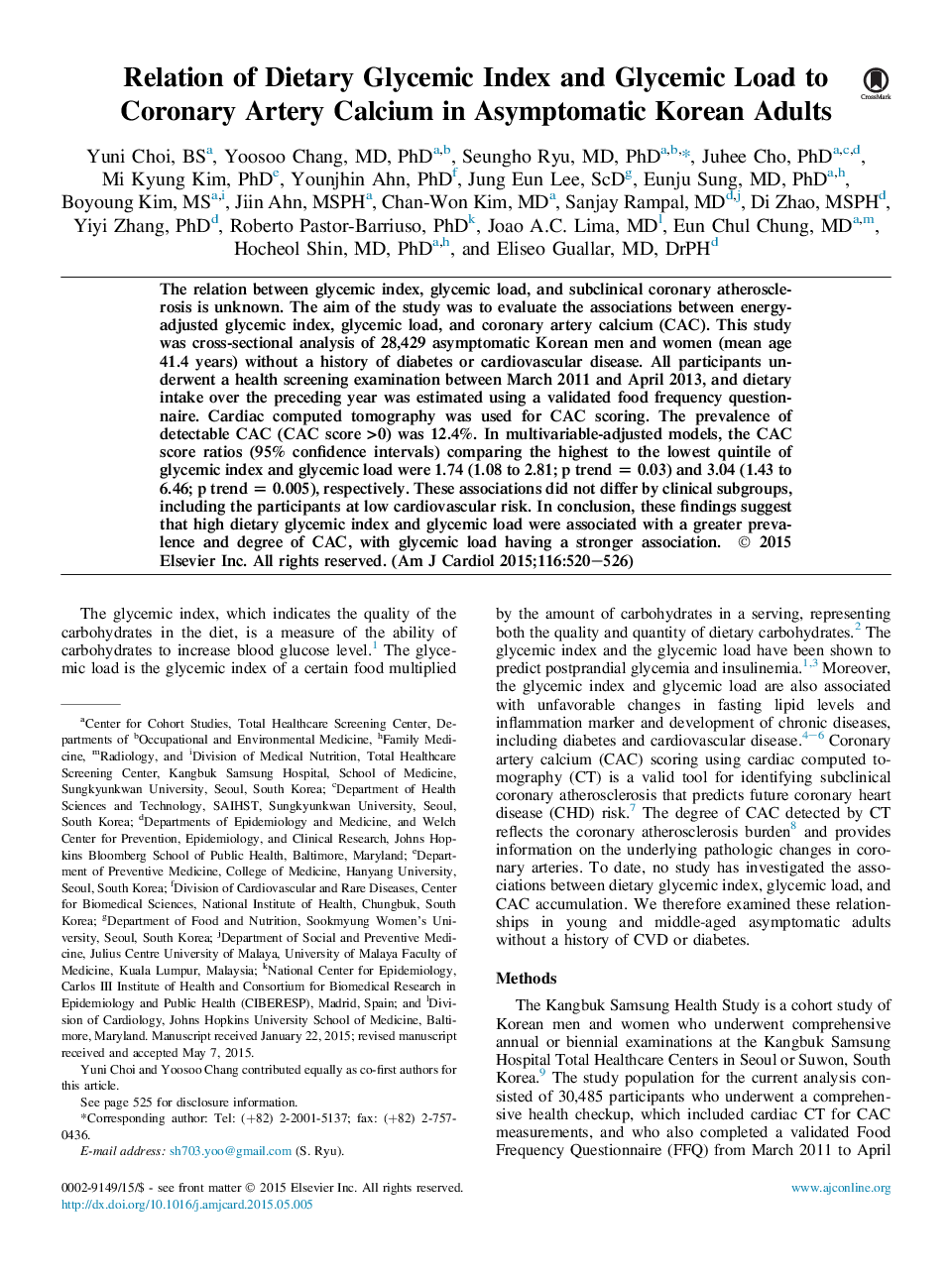| Article ID | Journal | Published Year | Pages | File Type |
|---|---|---|---|---|
| 2853515 | The American Journal of Cardiology | 2015 | 7 Pages |
The relation between glycemic index, glycemic load, and subclinical coronary atherosclerosis is unknown. The aim of the study was to evaluate the associations between energy-adjusted glycemic index, glycemic load, and coronary artery calcium (CAC). This study was cross-sectional analysis of 28,429 asymptomatic Korean men and women (mean age 41.4 years) without a history of diabetes or cardiovascular disease. All participants underwent a health screening examination between March 2011 and April 2013, and dietary intake over the preceding year was estimated using a validated food frequency questionnaire. Cardiac computed tomography was used for CAC scoring. The prevalence of detectable CAC (CAC score >0) was 12.4%. In multivariable-adjusted models, the CAC score ratios (95% confidence intervals) comparing the highest to the lowest quintile of glycemic index and glycemic load were 1.74 (1.08 to 2.81; p trend = 0.03) and 3.04 (1.43 to 6.46; p trend = 0.005), respectively. These associations did not differ by clinical subgroups, including the participants at low cardiovascular risk. In conclusion, these findings suggest that high dietary glycemic index and glycemic load were associated with a greater prevalence and degree of CAC, with glycemic load having a stronger association.
